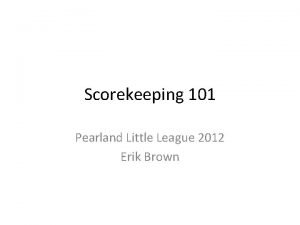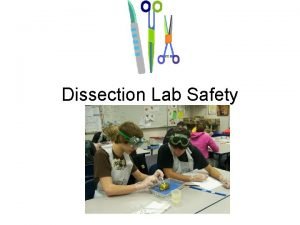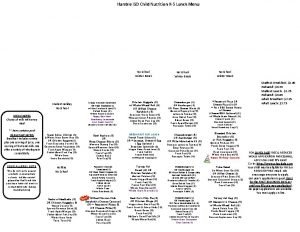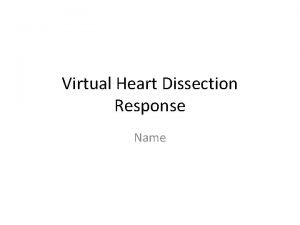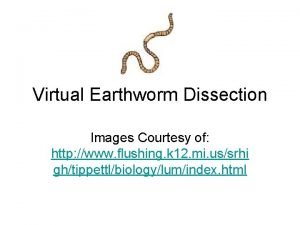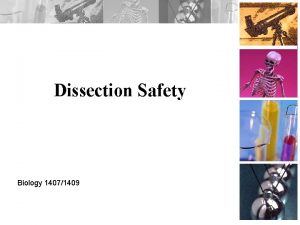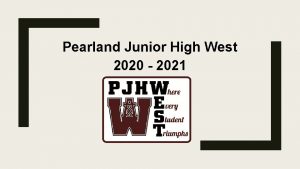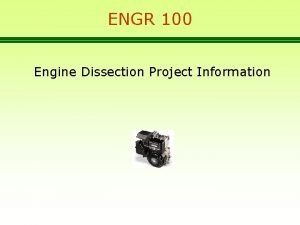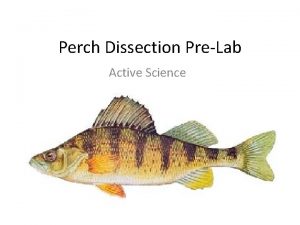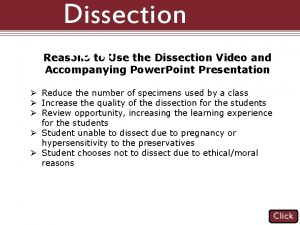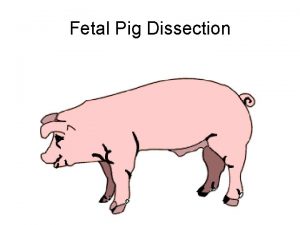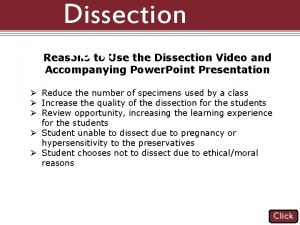Dissection Safety Pearland High School Pearland ISD Safety


















- Slides: 18

Dissection Safety Pearland High School Pearland ISD

Safety is your responsibility Always read through the lab so you know what you are doing before you start to do it! Prevention is the best way to avoid an accident!

Lets start with the basics… • Always wear your safety gear. ▫ Apron ▫ Goggles ▫ Gloves

Sharps Safety • Sharps are anything that can cut or puncture the skin. • Sharps you will be using in this lab will be • • Scalpels Dissecting pins Dissecting probes Dissecting scissors • Handle scalpel with extreme care, be aware of where the cutting side of the blade is AT ALL TIMES! • ALWAYS CUT AWAY FROM YOUR BODY and away from others.

Biological Hazards • Biological hazards are any hazard of a biological origin that could cause harm to a human. • The specimen you are dissecting is considered a biological hazard. • These specimens are stored in preservatives that are harmful if ingested. Safety Techniques • Never ingest specimen parts • Never remove specimens or specimen parts from the classroom • Properly dispose of specimens and parts • Properly store specimens as instructed by your teacher • Clean up your work area with a bleach based cleaner

After Dissection 1. Store your specimen as instructed by your teacher 2. Clean all dissection tools and store as instructed by your teacher 3. Clean your work area (lab table, dissecting pan, tools) with a bleach based cleaner. 4. Remove your gloves and throw them in the trash can 5. Wash your hands 6. Put up your goggles and apron 7. Have a seat in your desk and wait to be dismissed.

Warnings… • Failure to wear your safety equipment will result in your dismissal from the lab, and a zero for a lab grade. • Any horseplay or inappropriate care of specimens will result in your dismissal from the lab and a zero for a lab grade. • Not reading or following directions will result in your dismissal from the lab and a zero for a lab grade.

Safety • Why should you be careful with scalpels, scissors & pins? • Why should you wear gloves & goggles? • Why should long hair be tied back? • Why should you avoid wearing open-toe shoes? • Why is there no food or drink allowed in a lab? • Why is focus & appropriate behavior important in a dissection laboratory?

Dissecting tools • Pins- used to hold an area open or pinned back • Scissors- used to cut through tissue. ▫ Always try to use scissors when possible. • Scalpel- used to make incisions ▫ Used only when scissors can not be used.

• Pan- holds specimen • Forceps- to grasp at structures • Probe-to search for structures • Teasing Needle- for gently scraping tissue.

Dissecting Terms • ANTERIOR- “front” • POSTERIOR- “rear” sometimes called caudal.

Terms • DORSAL- “back” • VENTRAL- “belly”

Terms -relative location: • PROXIMAL-”near” • DISTAL-”far”

Terms • SUPERIOR- “above” • INFERIOR- “below”

Terms • SUPERFICIAL- “near surface” • DEEP- “below the surface”

• PECTORAL- “chest region” • PELVIC- “hip region”

Planes of Symmetry • SAGITTAL PLATEbisects left & right sides. • CORONAL PLATE bisects “front & back”. • TRANSVERSE PLATE bisects top & bottom halves. • LATERAL- “side” • MEDIAN- “middle”

Bilateral Symmetry
 Pearland isd.org
Pearland isd.org Schoolcafe pearland isd
Schoolcafe pearland isd Pearland isd skyward
Pearland isd skyward Why did robber barons bribe people in congress?
Why did robber barons bribe people in congress? Pearland little league baseball
Pearland little league baseball Troop 446 pearland
Troop 446 pearland Dissection safety worksheet
Dissection safety worksheet Earthworm dissection lab worksheet
Earthworm dissection lab worksheet Fat bodies frog
Fat bodies frog Memorial middle school la joya isd
Memorial middle school la joya isd Humble isd breakfast menu
Humble isd breakfast menu Lunch humble
Lunch humble K5 lunch
K5 lunch Crescenta valley high school summer school
Crescenta valley high school summer school Haltom high school summer school
Haltom high school summer school Heart dissection labeled
Heart dissection labeled Diagram of a dissected earthworm
Diagram of a dissected earthworm Starfish dissection game
Starfish dissection game Sea star ossicles
Sea star ossicles




